
About UsThe Numismatic Bibliomania Society is a non-profit organization promoting numismatic literature. For more information please see our web site at coinbooks.org SubscriptionsThose wishing to become new E-Sylum subscribers (or wishing to Unsubscribe) can go to the following web page link MembershipThere is a membership application available on the web site Membership Application To join, print the application and return it with your check to the address printed on the application. Membership is only $15 to addresses in the U.S., $20 for First Class mail, and $25 elsewhere. For those without web access, write to: David M. Sundman, Secretary/TreasurerNumismatic Bibliomania
Society AsylumFor Asylum mailing address changes and other membership questions, contact David at this email address: dsundman@LittletonCoin.com SubmissionsTo submit items for publication in The E-Sylum, just Reply to this message, or write to the Editor at this address: whomren@coinlibrary.com
BUY THE BOOK BEFORE THE COINYou won't regret it! |
- WAYNE'S WORDS: THE E-SYLUM NOVEMBER 27, 2011
- NEW BOOK: THE COINS OF ENGLAND, 47TH EDITION
- NEW BOOK: THE VALUE OF THE SESTERTII
- NEW BOOK: HISTORY OF UNITED ARAB EMIRATES CURRENCY
- NEW BOOK: COINS OF IRAN
- QUERY: REVIEW OF NUMISMATIC ART OF PERSIA SOUGHT
- QUERY: ATHENA/MINERVA SYMBOLISM
- QUERY: EAVENSON SALE PROOF 1841 LARGE CENTS
- HUNTINGTON BANCSHARES RARE CHECK COLLECTION
- QUERY: CURRENT ASIAN NUMISMATIC PUBLICATIONS SOUGHT
- QUERY: PREMIUMS PAID FOR POSTAGE AND FRACTIONAL CURRENCY
- NOTES FROM E-SYLUM READERS: NOVEMBER 27, 2011
- COIN FIND REWRITES HISTORY OF JERUSALEM'S WESTERN WALL
- ARTICLE DISCUSSES BANKNOTE SWITCH IF GREECE LEAVES THE EURO
- 100,000 CANADIAN CENTS
- CHINESE WOMAN TROLLS RIVER BANKS FOR OLD COINS
- 2012 OLYMPIC COMMEMORATIVE COIN DESIGNS
- DICK JOHNSON ON WORLD COINS OF THE FUTURE
- FEATURED WEB PAGE: THE COINS OF BRITISH INDIA
WAYNE'S WORDS: THE E-SYLUM NOVEMBER 27, 2011

We have no new subscribers to report this week, but we currently have 1,475 email subscribers, plus 167 followers on Facebook.
This week we open with information about four new numismatic books and a question about a fifth. Questions from readers dominate the rest of the issue, on topics as diverse as proof large cents, the symbolism of Athena and Minerva, and premiums paid for postage currency and fractional currency.
To learn more about Abraham Lincoln's last check, the Bibliotheque historique de la ville de Paris, and coins that have rewritten the history of Jerusalem's Western Wall, read on. Have a great week, everyone!
Wayne Homren
Numismatic Bibliomania Society
NEW BOOK: THE COINS OF ENGLAND, 47TH EDITION
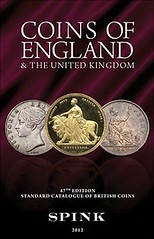 Coins of England and the United Kingdom remains the only single-volume reference work which features every major coin type from Celtic to the present day with accurate market values for every coin type listed. It is an essential guide for beginners, serious numismatists and anyone interested in British Coinage.
Coins of England and the United Kingdom remains the only single-volume reference work which features every major coin type from Celtic to the present day with accurate market values for every coin type listed. It is an essential guide for beginners, serious numismatists and anyone interested in British Coinage.
As with every new edition, all sections of the catalogue have been carefully checked by the specialists at Spink and the prices of the coins have been updated to reflect current market conditions. The reference numbers used are recognized world-wide and are quoted by all of the leading auction houses and dealers.
For more information, see: www.spink.com
NEW BOOK: THE VALUE OF THE SESTERTII
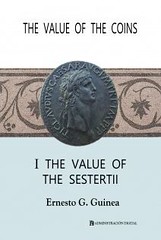 This book is the first of a set " The Value of the Coins " intended as a guide to coin collecting to enable the beginners to grade properly coins according to their condition. The way to do it is to show the pictures of the two faces of 300 coins from the most widely collected Sestertii in different condition grades and justify the market price of each one according to the grade, rarity and patina quality. Therefore the book is not intended to substitute the current catalogues but to complement them with accurate advises about how to assess condition grades for each particular coin.
This book is the first of a set " The Value of the Coins " intended as a guide to coin collecting to enable the beginners to grade properly coins according to their condition. The way to do it is to show the pictures of the two faces of 300 coins from the most widely collected Sestertii in different condition grades and justify the market price of each one according to the grade, rarity and patina quality. Therefore the book is not intended to substitute the current catalogues but to complement them with accurate advises about how to assess condition grades for each particular coin.
The book has 60 chapters, 600 photographs gently yielded by the current owners of the coins and more than 500 pages. Every chapter contains an introduction about the main events from each emperor from Augustus to Postumus, giving particular importance to the related numismatic aspects. The book includes price quotations for 44 emperors in 11 grades from Good to Extremely Fine.
For more information, see: THE VALUE OF THE SESTERTII (www.bubok.es/libros/204698/I-THE-VALUE-OF-THE-SESTERTII)
NEW BOOK: HISTORY OF UNITED ARAB EMIRATES CURRENCY
Emirati Researcher and writer Mutaz Mohammed Osman narrates the journey of the country's currency in his book History of UAE Currency being displayed at the ongoing Sharjah International Book Fair at Expo center.
Osman, who is also a collector of stamps and coins, traces the various currencies that were used in the UAE since the days of the Greek currency which was known as darkham 2500 years ago, followed by the Islamic currency, colonial currency, Indian rupee and finally the UAE dirham, named after darkham, that was introduced on May 19, 1973. He also talks about the rare coins in existence in the UAE such as coins used as compass to show directions and some coins resembling hairpins used for predicting luck. He highlights the traditional ways of making coins in the country.
Through the book, which is also used as a reference manual by the UAE Central Bank, the author is also narrating the heritage and history of each emirate. He said people in the UAE had used the Greek darkham during the era of Alexander the Great for a long period, until Islam entered the land of Oman and brought with it the Islamic coins made of gold and silver which later Arabised when King Khalifah Abdull Al Malik bin Marwan Umayyad replaced the Sasanian symbols and words with Arabic ones.
Then, Maria Theresa coins, which were known as French coins, but were originally Austrian, were worn by women for decoration. Later, Quwasim coins and Ottoman coins and then the Bargash paisa made by the Duke of Zanzibar, Bargash bin Saeed bin Sultan, were used in Oman and all Gulf countries.
The use of the British Indian rupee started in the age of King William IV during 1766-1837, followed by the second Indian rupee during the Victorian age, the third rupee during the rule of King Edward VII, the fourth rupee during the rule of King George V and the fifth rupee during the age of King George VI.
When India gained its independence on August 15, 1947, the new government replaced all symbols of the British colonisation in the currency with Indian ones. India allowed the UAE and the Gulf countries to use its rupee as the currency and the UAE continued to use the Indian rupee which was made by the East India Company. Rupee coins of seven denominations were used in the UAE, including Re1, half rupee, quarter rupee, one-and-a-half ana, half ana, quarter of ana, and half paisa.
Chintaman Dwarkanath Deshmukh, first governor of the Indian Reserve Bank, assigned the persons who would hold the post of Reserve Bank governor to put their signatures in the currency. The people of the UAE and the Gulf countries used the Indian currency for a long time of period. The Indian government allowed the UAE and other Gulf countries to make their own versions of the Indian rupee with different words and symbols but not the value.
In the course of time, the Indian government decided to reduce the value of the Gulf rupee which made the citizens in the region to lose a lot in their trade and the cost of living shot up. The Gulf countries, including the UAE, then decided to abandon the Indian rupee and started using the Saudi rial for a while and Abu Dhabi used Bahraini rial and Dubai and Qatar initiated a joint currency under the Qatar and Dubai Currency Council.
After the UAE Federation came into being, the dirham, which is the currency today, began to be used in the country from May 19, 1973. The book also displays images of all coins used in the country since the Greek era. Mutaz Mohammed Osman, who is considered the first one to trace the history of the coins in the UAE, wrote two books on the topic.
He said he has no plans of doing more research or write another book about the history and heritage of the country because his works have not been given importance by the Arab readers.
To read the complete article, see:
(www.menafn.com/qn_news_story.asp?storyid=
%7B1f33d6aa-9af1-4f05-a0ab-a493b5b1d5d3%7D)
NEW BOOK: COINS OF IRAN
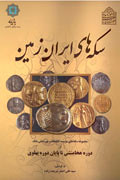 "Coins of Iran" a book by Seyyed Ali-asghar Shariat-zadeh has been released explaining the coin collection of Malek museum and library institute.
"Coins of Iran" a book by Seyyed Ali-asghar Shariat-zadeh has been released explaining the coin collection of Malek museum and library institute.
IBNA: Shariat-zadeh said:" Recognizing and even introducing the coins requires research as well as publishing related works; the print of such a book may create a new opportunity for the presence of national and foreign numismatists which can indeed help the release of a more complete collection in different languages."
Some numismatists believe that coins are written and variant documents, a tiny book which is significance indeed. Particularly coins, compared to other historical and cultural tools and objects, fail to damage. Archeology findings, throughout the history, have always been a matter of concern since the risk of being damaged by the weather as well as other historical and natural disasters.
Archeologists and historians believe that the field of "coins" is a research branch of archeology; on the other hand, it's a mean and method to learn history, culture and civilization. Thus scientific finding should be considered since coins unveil many historical parts as well as the region's historical geography.
Coin depicts every nation's symbol of writing, language, religion, art, traditions as well as ornaments which helps to research a specific history period's social, cultural, economical and political features. In fact the researchers say that every coin is a book of art and culture mysteries, more specifically it's a vital source for discovering the veiled secrets of history.
Malek museum and library institute which holds more than 2000 coins of different periods including Lydia and the Achaemenid Empire and the Islamic coins till the contemporary era is one of the main treasures in Iran.
Two coin collections were researched; firstly the public treasures which were public or semi-public and 2nd the private collections.
Registration, introduction and publishing the pictures of Malek museum's coins can help the world's historians and numismatists.
The first print of "Coins of Iran" has been released in 340 pages and 3000 copies.
For more information, see: www.ibna.ir/vdcjo8evyuqe8az.92fu .html
JANUARY 7, 2012 NEW YORK AUCTION SALE HIGHLIGHTS
Classic Works on Ancient, Medieval & Modern CoinsINCLUDING: THE FIRST EDITION OF THE FIRST NUMISMATIC BOOK
SOME RARE WORKS ON RUSSIAN NUMISMATICS, INCLUDING A UNIQUE
ALBUM OF OVER 100 WHITE RUSSIAN PAPER CURRENCY PROOFS
ORIGINAL EDITIONS OF LATIN AMERICAN WORKS BY J.T. MEDINA
NEW! FREE LIVE INTERNET BIDDING
KOLBE & FANNING NUMISMATIC BOOKSELLERS
141 W JOHNSTOWN ROAD, GAHANNA OH 43230-2700
(614) 414-0855 • df@numislit.com • GFK@numislit.com
QUERY: REVIEW OF NUMISMATIC ART OF PERSIA SOUGHT
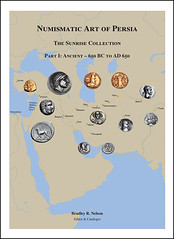 I'd like additional information about the just launched book on Persian Numismatics.
I'd like additional information about the just launched book on Persian Numismatics.
Here's the link to it on the CNG website: www.cngcoins.com/Coin.aspx?CoinID=201395
Nelson, Bradley R., ed., Numismatic Art of Persia. The Sunrise Collection, Part I: Ancient – 650 BC to AD 650. 2011. Hardbound, $175
There's a description of the book but actually I wonder if any member had seen the actual book and would have a more critical review to share besides the publisher's own description.
From the web site:
This collection of over 1000 coins from ancient Persia represents one of the finest private collections of this coinage ever compiled. The large selections from Parthia, Persis, and the Sasanian Empire form the core of the collection. While coins of these series are readily available, the collective quality and rarity here are unprecedented, save for those collections in the greatest public museums.
The coinages of the Achaemenids and the Hellenistic empires of Alexander the Great and Seleukos Nikator, whose issues were the first ever struck in Persia, as well as the smaller kingdoms of Charakene and Elymais are also included. The collection also has modest, yet impressive, groups of coins from those culutres who existed on the periphery of Persia–the Kushan Empire, the Indo-Parthians, the Indo-Skythians, Khwarazmia, and the Iranian Huns.
All of these cultures were influenced by, and, in turn, influenced, the indigenous Persian groups that were respectively contemporary with them. They were also all connected by the great Silk Road routes running through Persia, and their coinages were integral to their interaction.
The organization of this book is fairly straightforward. Each coin series has been cataloged in its own separate section, arranged chronologically, and prefaced with a map and an essay comprising a brief introduction to the history and coinage of the respective culture.
The introductory essays are written by recognized scholars for their particular fields of research: G.R.F. Assar (Achaemenids and Parthia), Oliver D. Hoover (Hellenistic/Seleukid), Wilhelm Müseler (Achaemenids and Persis), Khodadad Rhezakhani (Charakene, Elymais, Kushan, Persis, Sasanian, Kushano-Sasanian, and Iranian Huns), and R.C. Senior (Indo-Parthian & Indo-Skythian).
A list of transliterated and translated legends follows the introductions to Persis and the Sasanian Empire, as the legends are cataloged in their original Aramaic and Pahlavi. Finally, select coins from each section are depicted in double-sized enlargements following their respective catalog sections.
QUERY: ATHENA/MINERVA SYMBOLISM
 I'm working on a presentation for the early January meeting of the Medal Collectors of America on the symbolism surrounding Athena/Minerva used on coins and medals, and would appreciate some input from the readers of The E-Sylum. The presentation is titled "Athena Leading the Way: The History of Her Medallic Iconography" and will trace the evolution the symbolism related to Athena/Minerva on coins and medals since first used on ancient coins.
I'm working on a presentation for the early January meeting of the Medal Collectors of America on the symbolism surrounding Athena/Minerva used on coins and medals, and would appreciate some input from the readers of The E-Sylum. The presentation is titled "Athena Leading the Way: The History of Her Medallic Iconography" and will trace the evolution the symbolism related to Athena/Minerva on coins and medals since first used on ancient coins.
The example shown here, for example, is a French commemorative medal dated 1717 with Athena guiding a young King Louis XV to the Temple of Fame, an allegory related to his early education. It has the motto "Accipe Quae Peragenda Prius" or "Learn what is necessary to reach there", which comes from Virgil's Aeneid (Book 6, line 136).
Here are some questions:
• I'm familiar with several ancient Greek and Roman coins with Athena/Minerva motifs, but can anyone suggest a good reference discussing specifically this iconography as used on ancient coins?
• Steve Scher has been very helpful suggesting both references and people to contact regarding the use of the Athena/Minerva symbolism on Renaissance medals, though I'm still open to more input since the early development of the modern medal occurred during this period and there are some fantastic Renaissance medals using the Athena motif.
• The Britannia figure is clearly based on these earlier classical designs, and I believe Athena in particular. Can anyone recommend a good book or article discussing the creation and early numismatic use of the Britannia figure?
• Similarly, the French Marianne figure is often shown with an ancient Greek or Roman helmet, evoking the both the wisdom and military strength that Athena represents. Where can I find a discussion of the French use of this motif (hopefully written in English!)?
• And of course, the seated Liberty figure on American coins is based on these earlier European and classical designs, and there is a great discussion of this in Bob Julian's chapter on the historical background to the Gobrecht dollars in "Silver Dollars & Trade Dollars of the United States - A Complete Encyclopedia" by Dave Bowers. Any other key resources?
• In the ANS volume "The Medal in America" there's a great chapter by Yvonne Korshak on the symbolism on the Libertas Americana medal, which shows on the reverse Athena (France) protecting the young Hercules (America). Any other suggested references focusing on this iconography?
Thanks in advance for any help. The presentation will be given at the MCA meeting being held at the New York International Numismatic Convention, at the Waldorf on Saturday, January 7.
QUERY: EAVENSON SALE PROOF 1841 LARGE CENTS
Ron Guth of PCGS CoinFacts writes:
Here's a question for the E-Sylum inmates: Six Proof 1841 Large Cents appeared in the Chapman "Eavenson" sale of 1903. Breen suggests they were from a mint official's collection "probably Patterson Dubois." The Eavenson catalog said they are from a prominent Philadelphian's collection..."now deceased" (thanks Scott Rubin!). Can anyone confirm or debunk Breen's pedigree, or shed any more light on who owned these coins?

THE BOOK BAZARRE
HUNTINGTON BANCSHARES RARE CHECK COLLECTION
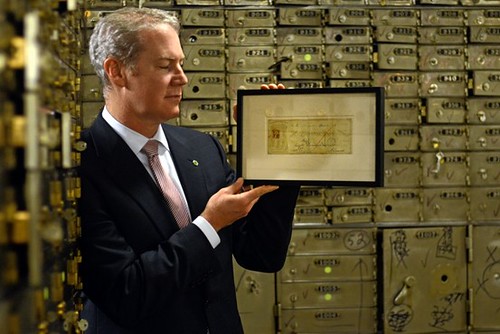
When Huntington Bancshares Inc. facilities employee Peggy Draeger uncovered an 1865 check by Abraham Lincoln in a long-forgotten box, she rekindled not only the odd story of how the check came to be written but also of its chain of custody.
The first story begins some 24 hours or so before John Wilkes Booth shot Lincoln, when the president likely set about his routine of ensuring his family's monthly expenses were set. The nation's 16th president wrote himself an $800 check on April 13, 1865, made out to "Self." It's the last known check he ever signed—as rare a piece of Lincolniana there is, according to experts. He was shot on April 14.
Each month Lincoln wrote a check for about $800, according to Daniel Stowell, the director and editor of the Papers of Abraham Lincoln. "This was probably groceries and necessaries," Mr. Stowell said. "He obviously didn't pay any rent, but he did have horses to maintain for carriage and they had to be fed, so that's perhaps the equivalent of a car payment."
The Lincoln check is rare not just because of its timing but also because he wrote only two checks from First National Bank. Lincoln was a banking client of Riggs & Co., Mr. Stowell said. But his August 1864 paycheck, for $1,981,66, was deposited in First National Bank, probably a mistake by the assistant secretary of the treasury who handled Lincoln's finances.
Given the mistake, the April 13, 1865, check is just the second withdrawal Lincoln made from the First National account, according to the bank's ledger. The balance was delivered to the Lincoln estate after his death.
The second story picks up in 1927, when the New York Times reported that Thomas F. Madigan, an autograph collector, turned up the check for the first time.
"Lincoln's handwriting is typical of the man—rugged, virile, unpretentious, suggesting strength and simplicity," Mr. Madigan would write later in his book "Word Shadows of the Great: The Lure of Autograph Collecting."
The bank put the checks in the trove on display in Cleveland in 1976, as part of the country's bicentennial celebration.
Enter Huntington, which acquired Union Commerce in a hostile takeover in 1983. The checks almost came public after Huntington offered them to an Ohio historical society to exhibit, but they were never displayed and were returned to the bank.
There they sat until Huntington's Ms. Draeger opened the box last year. The bank had the checks appraised and considered auctioning them off, but public interest prompted the bank to cancel the auction and instead put the checks on display at banks around the country.
As for the Lincoln check, it is currently on display in Cleveland—in the old Union Commerce headquarters.
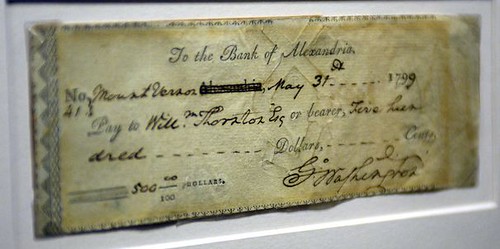
To read the complete article, see: The Quirky Story Behind the Lincoln Check and Its Journey (online.wsj.com/article/SB10001424052970204630904577056561674231688.html)
KOLBE & FANNING NUMISMATIC BOOKSELLERS WEBSITE
QUERY: CURRENT ASIAN NUMISMATIC PUBLICATIONS SOUGHT
Do any readers know of a web site that has a listing of current numismatic publications (magazines, journals, club newsletters) in South Korea, China, Japan and Hong Kong? The nice folks in the libraries at the ANA and ANS have provided some useful links to articles in periodicals, but I can't find email or street addresses for the publications or for even some of the larger numismatic societies and groups, such as:
Numismatic Society (Asia) -- the URL listed as recently as this past May, www.numismatics-asia.com, isn't working.
The Journal of East Asian Numismatics, relaunched online in 2008, apparently is no longer around.
I'm also seeking contact information for editors at the China Numismatic Society, Japan Coin Collectors Journal, and any other overseas commercial magazine or club publication that covers Korea, China, Japan and/or Hong Kong. (I already have contact info for Numismatics International here in the USA).
Thank you, E-Sylum readers, for pointing me in the right direction.
QUERY: PREMIUMS PAID FOR POSTAGE AND FRACTIONAL CURRENCY
I've been engaged in a most interesting and lively exchange with Fred Reed pertaining to postage currency, and its distinction from later issues of fractional currency.
To that end, I am attaching the law authorizing postage currency and some contemporary accounts that Fred has compiled from his exhaustive research for his forthcoming book on Civil War money.
The attached law is clear that postage currency could be tendered in amounts up to $5 per transaction for customs taxes, which otherwise had to be paid in gold, but otherwise postage currency was redeemable in legal tender notes.
My question is if any of your readers have found either Treasury tables or bank note reporter quotations that differentiate between premiums paid for postage currency and fractional currency? If so, those findings may well reflect that the currency exchange market was willing to pay a premium for postage currency because even in a small amounts it was as good as gold for paying customs taxes.
Clearly the data Fred has found reveals that significant premiums were being paid for postage currency during the initial period when it was in short supply and that it was actively being hoarded. It certainly was a major convenience for making change in comparison to handling postage stamps with their sticky gum and tiny size.
To date the tables and quotes I have seen do not distinguish between postage currency and fractional currency, but instead lump them together and value them the same as legal tender notes.
I must admit that I don't have much in the way of these data at my fingertips from early during the Civil War, so I may be blind to all the appropriate early Civil War data.
I ran this issue by Dave Bowers who also has an interest and expertise in Civil War era currency, and he suggested forwarding it along to your readers, which seems like an excellent idea.
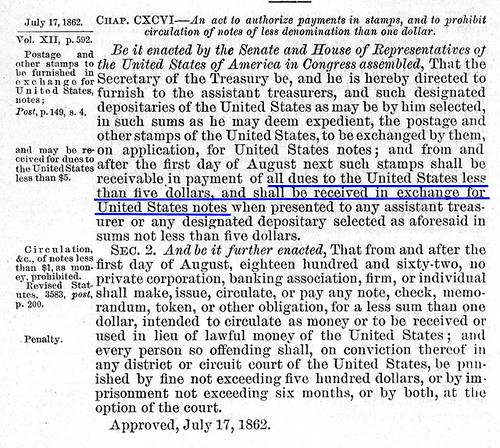
So scarce were these notes in the Queen City, that Postage Currency was being sold at 5 to 10 percent premium by the city's bankers. "To exchange a dollar bill," one of the local newspapers complained, "you must lay it nearly all out." Large firms brought in large quantities of the Postage Currency from the East, but even they paid it out at 12.5 to 15 percent advances.
These notes were no help to change-strapped public. A frustrated customs collector, Enoch Carson, who was responsible in the public's eye for the derangement in supplies was forced to put up a large sign: "NO MORE Postal Currency At Present. Until more comes, no use making Inquiry." His sign was up more often than not, adding to the public's frustration.
CURRENCY AT A PREMIUM. -- We respectfully call the attention of our money-making friends, whose working store they are seeking to augment by demanding a premium on the newly-issued postage currency, to the section No. 195 of the act of March 3, 1835, as follows: [It shall not] be lawful for any Postmaster, or other person, [to sell] postage stamps for any larger [sum than] indicated upon the face, and any person [violating] this provision, shall be esteemed guilty of a misdemeanor, and on conviction thereof shall be [fined a] sum not exceeding $500," the Times reported September 19th.
NOTES FROM E-SYLUM READERS: NOVEMBER 27, 2011
Favorite Libraries
Chris Faulkner writes:
I thoroughly enjoyed the feature on the 35 top libraries in last week's E-Sylum. I have been fortunate to work in many of the top ten -- usually on matters unrelated to numismatics -- such as the old British Museum Reading Room, the Bodleian, the New York Public, the Thomas Fisher Library, Canada's Library of Parliament, etc.
I'm amused when I look in at the British Museum these days to see that the Reading Room is cordoned, now a designated tourist gawk, which one can apparently be taken round with a guide. Well I remember the seemingly endless numbers of huge blue volumes whose pages one turned looking for a title and call number of a volume to be retrieved from the miles of underground stacks. There is an essay to be written on the idiosyncracies of cataloguing and the peculiar in-house system of call numbers utilized by many of the world's major libraries.
I looked with pleasure and envy at the images of those libraries in which I haven't done research and have been dreaming these past few days of projects that might justify a visit to some of those I've missed! Is there a more satisfying example of a built environment to work in, relax in, daydream in, than a library?
You will no doubt get a flurry of emails from people promoting their own favourite library. I want to make a pitch for mine, not because it is architecturally interesting or spectacular, but because it is incredibly relaxing and conducive to study and reflection. This is the Bibliotheque historique de la ville de Paris, located on a side street in the Marais, in the 4th arrondissement in Paris. It is entirely devoted to the history of Paris, with over a million volumes on the subject.
It is seldom very busy and obviously has everything you ever wanted to know about Paris on every imaginable subject. Apart from its enormously helpful staff, its attraction is its ground floor main reading room, whose tall windows are open on a summer's day to a small garden from which comes the sound of birds and the perfume of flowers. I see myself there now, even though winter is coming down upon me here in Canada.

Petition to Remove "In God We Trust" From U.S. Currency
Kavan Ratnatunga writes:
The White house in 2011 September has created a website where anyone can post a petition and if it picks up more than 25,000 votes from registered users (Now around 800,000 and growing at 20,000 per day) the white house will respond.
wwws.whitehouse.gov/petitions#!/response/religion-public-square
Is one such response on the use of :In God we Trust" on currency wwws.whitehouse.gov/petitions#!/petition/remove-god-we-trust-currency/bNhKRxQn
This gives why this site was created. /wwws.whitehouse.gov/petitions#!/how-why/introduction
Interesting concept if it grows.
"YOU CALL YOURSELF A PROFESSIONAL?"
COIN FIND REWRITES HISTORY OF JERUSALEM'S WESTERN WALL
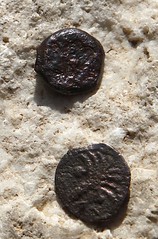 The history of one of the world's holiest sites - sacred to both Jews and Muslims - is set to be rewritten, following a surprise discovery in a ritual bath beneath the complex.
The history of one of the world's holiest sites - sacred to both Jews and Muslims - is set to be rewritten, following a surprise discovery in a ritual bath beneath the complex.
It proves that the Wall - supposedly built by Herod, the Jewish king who features prominently in the Gospels, was in fact built much later.
Newly found coins underneath Jerusalem's Western Wall could change the accepted belief about the construction of one of the world's most sacred sites two millennia ago, Israeli archaeologists said Wednesday.
The man usually credited with building the compound known to Jews as the Temple Mount and to Muslims as the Noble Sanctuary is Herod, a Jewish ruler who died in 4 B.C.
Herod's monumental compound replaced and expanded a much older Jewish temple complex on the same site.
But archaeologists with the Israel Antiquities Authority now say diggers have found coins underneath the massive foundation stones of the compound's Western Wall that were stamped by a Roman proconsul 20 years after Herod's death.
That indicates that Herod did not build the wall - part of which is venerated as Judaism's holiest prayer site - and that construction was not close to being complete when he died.
The four bronze coins were stamped around 17 A.D. by the Roman official Valerius Gratus.
The coins were found inside a ritual bath that predated construction of the renovated Temple Mount complex and which was filled in to support the new walls, Reich said.
They show that construction of the Western Wall had not even begun at the time of Herod's death. Instead, it was likely completed only generations later by one of his descendants.
The dig in which the coins were discovered cleared a Roman-era drainage tunnel that begins at the biblical Pool of Siloam, one of the city's original water sources, and terminates with a climb up a ladder out onto a 2,000-year-old street inside Jerusalem's Old City.
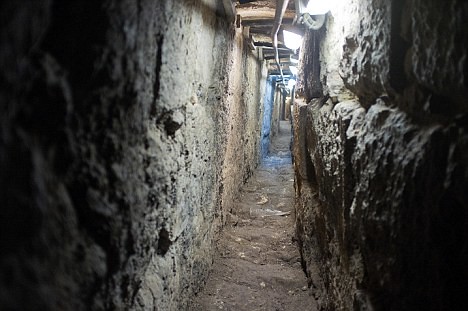
To read the complete article, see: Coins from 17AD found under Jerusalem's Western Wall hints sacred site NOT built by Herod (www.dailymail.co.uk/sciencetech/article-2065254/Coins-Jerusalems-Western-Wall-hints-sacred-site-older-Herod.html)
ARTICLE DISCUSSES BANKNOTE SWITCH IF GREECE LEAVES THE EURO
Kavan Ratnatunga of Sri Lanka writes:
Just after a 3% devaluation of Sri Lankan rupee I was worried to see an article which mentioned both Sri Lanka and Greece, but it turned out to be a very interesting article about the making of Money
The Greeks would have to ensure the new banknotes were exactly the same size as the euro banknotes, however, as otherwise, every ATM would need to be recalibrated accordingly.
There are currently seven euro banknote denominations in circulation and eight coins. This is unusually high, with the global average being five different banknotes and the UK having only four. Greece needn't bother printing equivalent notes in all the denominations as a way to save on costs. It is widely accepted that to print a banknote costs about six euro cents, so cutting down on the different types of note could save considerable costs.
Denominational planning is an important consideration when introducing a new currency series. In Sri Lanka, when the decision was taken to overhaul the currency, the central bank focused on a number of factors, including ensuring the new currency was convenient for the public to use. This led to the retirement of the 10 rupee note and the introduction of a 5,000 rupee note for the first time.
In terms of the quantities to be printed, one analyst says that on average, research indicates there are between 40 and 60 banknotes per inhabitant in circulation. "But during a changeover to a new currency, you should initially print more," he says.
In terms of the time scale, there is no doubt a project of this size could not happen overnight. When South Sudan became an independent country on July 8, 2011, at midnight local time, the project to develop a new currency had secretly been underway for six months. In January 2011, more than 98% of the population had voted in favour of independence and with the date set for early July, the pressure was on the South Sudanese to design, create, print and have available a brand new, fully functioning currency by Independence Day.
British note printers De La Rue were tasked with the project, which would normally take 18 months. One of the first things the parties agreed on was a new denominational structure and to forecast the volumes required for each note. Following discussions with the Minister of Finance, it was decided that new notes would be created with values of 1, 5, 10, 25, 50 and 100 pounds. A set of three separate coin vouchers was also created (5 piasters, 10 piasters and 25 piasters) to stand in for coinage until permanent replacements could be made.
With a dedicated team of engravers and making use of manufacturing sites in Sri Lanka, Malta and Kenya, the company got the project done. The huge efforts to achieve the realisation of a relatively small currency in comparison to what Greece would need, indicates how long it might take for a new drachma to be ready for use. Work began on the Sri Lankan series, which was issued in February this year, some three and a half years earlier, for example.
To read the complete article (subscription required), see:
Greek reversion to drachma easier than euro conversion, say analysts
(www.centralbanking.com/central-banking/news
/2124508/greek-reversion-drachma-easier-euro-conversion-analysts)
100,000 CANADIAN CENTS
An anonymous donor gave the Saint Lawrence Shakespeare Festival in Prescott, Ontario, 20 bags of Cents. It is said the donor was a collector and Shakespeare fan.
As the economic value of the cent -- of any country -- continues to decline, merchants who handle large quantities of small denominations are going to find creative ways to dispose of such stashes of the unwanted coin. Donations to charities just moves the problem into their court.
But here is a suggestion for the Shakespeare Festival: melt the cents, use the resulting copper alloy to strike medals, bestow the medals to donors who donate real cash, and sell the remaining medals to collectors and the public.
Collectors would like the medals for the relic value of the melted cents.
Win-win-win-win.
Here's the news story from Canada: : Pennies pile up in Shakespeare office (www.recorder.ca/ArticleDisplay.aspx?e=3382690)
THE BOOK BAZARRE
CHINESE WOMAN TROLLS RIVER BANKS FOR OLD COINS
 In an era when cultural relics can bring in big profits, collector Qin Furong is taking a step to the side.
In an era when cultural relics can bring in big profits, collector Qin Furong is taking a step to the side.
The former street cleaner in Xiangyang, Hubei province, who retired in 1995, found that life after work was not that appealing. "I disliked the slow pace after retirement," said the 66-year-old.
Qin Furong shows her collection in Xiangyang, Hubei province. To kill time, she went around on the streets by bike, sometimes clearing rubbish along the Hanjiang River, a tributary of the Yangtze River.
One day she found some copper coins on the riverbank and at nearby construction sites, and took them home. She didn't realize the true value of her lucky discoveries until a few months later when she was reached by some ancient coin buyers.
"For some of the coins, they paid me 30 to 40 yuan ($5 to 6) each. The price was beyond what I had expected," she said.
As more and more such buyers approached her to purchase coins, she wondered why they targeted such "useless" old stuff. After careful research, she came to realize that what she had picked up were in fact antiques with rich cultural meanings.
"They are real historical treasures for our nation!" she said.
So Qin rejected all the buyers' inquiries and refused to sell her coins. Since then, she has come to the river every day before dawn, hunting for pieces of the past. She is not the only one looking for antiques along the river, however.
"But I collect to protect and donate them to the government, rather than sell them for money," she said.
She has collected coins, gold rings, silver bracelets, glazed ceramic chips and more than 2,000 pieces of bronze ware.
Last year, Qin donated more than 2,000 valuable antiques to the city museum without asking for any compensation or benefit. Her collections were put on display for the public in June.
To read the complete article, see: Collector picks up pieces of the past (http://www.chinadaily.com.cn/china/2011-11/24/content_14150718.htm)
2012 OLYMPIC COMMEMORATIVE COIN DESIGNS

A gold coin commemorating London's 2012 Olympics, designed by eminent sculptor Sir Anthony Caro, has been revealed by the Royal Mint at London's Royal Academy of Art.
The UK's first Kilo coin - one of just 60 to be produced - is worth £100,000 as it contains 1kg of fine gold.
A silver Kilo worth £3,000 designed by artist, composer and writer Tom Phillips was also revealed.
Both coins are UK legal tender and 2,012 silver Kilos will be produced.
The Queen personally approved both designs in order for them to become legal tender.
The obverse of the coins features her effigy, created by sculptor Ian Rank-Broadley, whose design of Her Majesty appears on all UK and Commonwealth coinage since 1998.
Sir Anthony Caro's design represents how the Games focus on success and pushing the body and mind to their limits as well as the long heritage of the Olympics. His coin is framed by a laurel wreath and the London 2012 logo, and depicts the sports equipment used for weightlifting, boxing, football and athletics.
During the manufacturing of the gold Kilo, a special press and production technique was used to achieve the highest ever relief on a coin struck by the Royal Mint. However because of its worth and size, it is unlikely to go into circulation.
The silver Kilo design focuses on the idea of teams working in unison to achieve success and victory, featuring the words "Unite our dreams to make the world a team of teams". It also has images of celebratory flags creating a sun for the Games while also representing the Olympic flame.
To read the complete article, see: Sculptor's £100k Olympic gold coin revealed (www.bbc.co.uk/news/entertainment-arts-15843315)
DICK JOHNSON ON WORLD COINS OF THE FUTURE
South Africa announced this week that it is abolishing its 5-cent coin. It is also changing the composition of its 10-cent coins (slightly).
Here's the government news release: www.buanews.gov.za/news/11/11112411351001
This is a very smart move by South Africa. It is the latest progressive country among about a dozen others that have recognized that world economics has advanced so far to make the cent and nickel obsolete coins of commerce because of their low value. The 10-cent coin will be the lowest coin in circulation in this country as in the others. Prices will still be quoted in cents, it is only the final transaction amount to be rounded off to the nearest 10-cent increment.
How long will the United States drag its feet to recognize this fact? It should revamp its entire coinage system at one time instead of attacking separate problems, say, for each denomination.
The U.S. Treasury lost $42 million last year making cents and nickels of metal alloys that cost more than the face value of the coins produced. We are on track to spend $5 million more for a study to find a metal to replace these compositions. Numismatist David L. Ganz suggested an aluminum alloy in such a study in a New York Times article (reported here in E-Sylum vol 14, no 36, art 13, August 28, 2011).
To find compositions in which to strike cents and nickels -- which no longer have an economic justification to exist -- is dumb, dumber and dumbest. Both the cent and the nickel as a circulating denomination should be abolished. (Prices can still be quoted in cents, or any decimal fraction thereof, it is only the "transaction price" -- what the Canadians call the "tally price" -- that is rounded off. This balances out overall. To criticize for the reason everyone will raise to the higher increment is insignificant. Such criticism is also dumb.
The nickel should be rebased (revalued) to 10 cents and continue to circulate. The cents need to be melted and recoined into a higher denomination. These are just two suggestions in my 42-page plan "Future Coins."
I outline not only what coins should be abolished, what denominations should be retained, what new denominations should be added -- instead of 1c, 5c, 10c, 25c, 50c -- we should have 10c, 50c, $1. $5, $10. There are six compartments in current cash registers. They would easily accommodate these new denominations once the lower denominations are eliminated.
The vending machine industry, largest user of coins, would surely endorse this plan because 90% of the industry's problems are the use of paper dollars in their machines. Higher denomination coins would eliminate that.
My plan spells out the size of all future coins -- diameter and thickness -- plus what composition each should be struck in (eliminating problems from inevitable rise of metal costs).
It calls for what mints should do what, plus a new mint to be established just for the striking of one denomination -- guess which! -- and where it should be located (and why).
It calls for design suggestions for each new future coin.
It also suggests embedding a microchip in high value coins for a number of reasons. Hey, we have serial numbers on currency, why shouldn't we have serial numbers for each coin?
I have sent the manuscript on "Future Coins" to numerous publishers. Each has rejected it. It appears the plan is too practical -- it is not political -- and it is politicians who will make the final decisions to implement such actions.
In spite of this, I am willing to send a copy of this plan to any U.S. Treasury official, Congressman, or Congressional aide who requests it. (At: dick.johnson@snet.net).
FEATURED WEB PAGE: THE COINS OF BRITISH INDIA
This week's Featured Web Page is on the Coins of British India.The purpose of this web site is to describe the beautiful coinage of British India 1862-1947. The attempt has been made to fully document every major variety using high-quality photographs. This should allow collectors to accurately identify their coins, and buyers/sellers can agree on the coins being bought and sold. My hope is that this web site will be useful to all collectors of British India and help popularize this most interesting area of coin collecting. The combination of beautiful design, high quality strikes, interesting varieties and relatively low cost makes for an ideal subject for study and collecting. User input with corrections, additions or other commentary is most welcome.
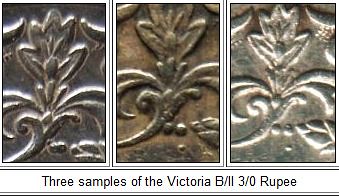
www.jfcampbell.us/india/
